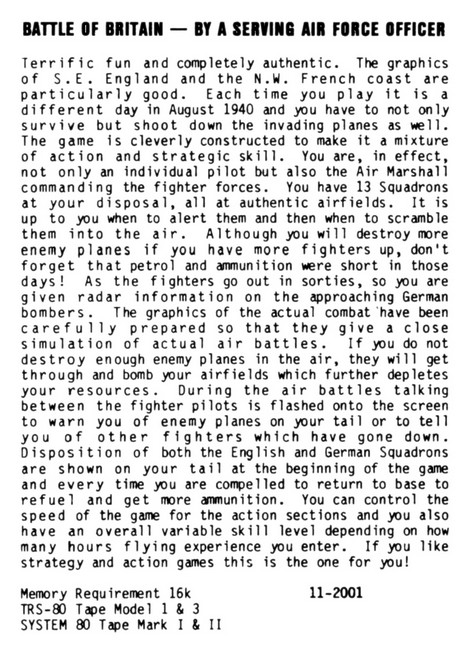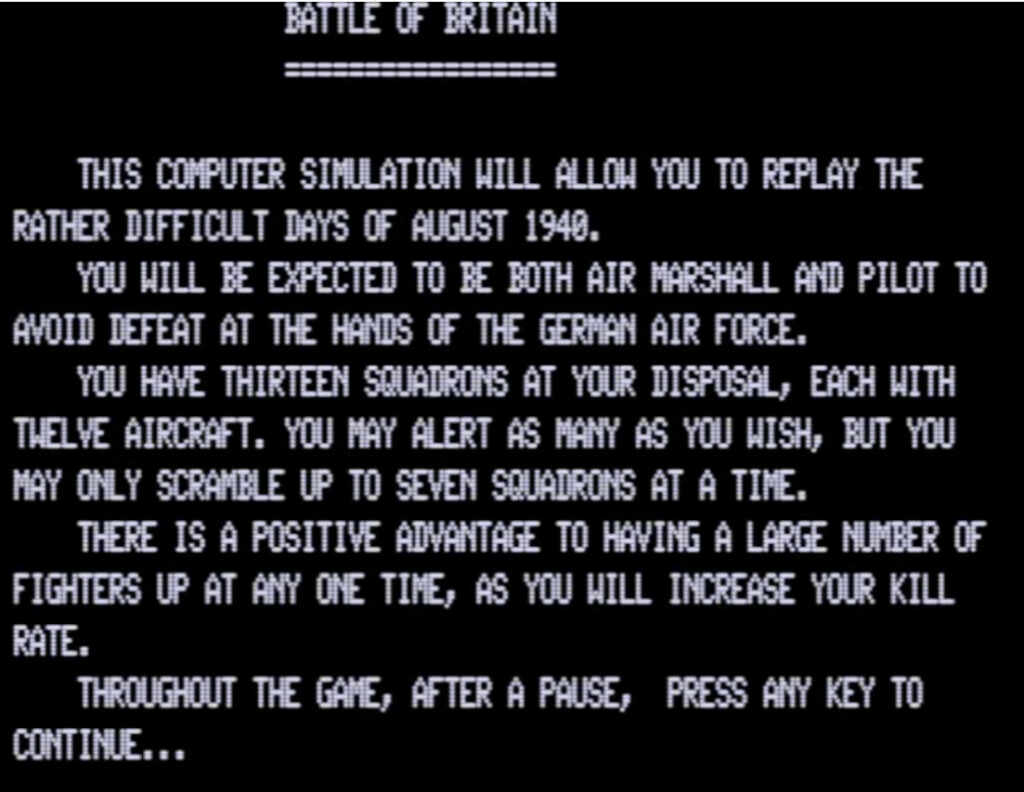
Here we go again !
This TRS-80 Battle of Britain game starts much more seriously than the previously reviewed 1982 ZX Spectrum Battle of Britain, with the game showing the German and British airbases in the theatre, and the planes they are using :
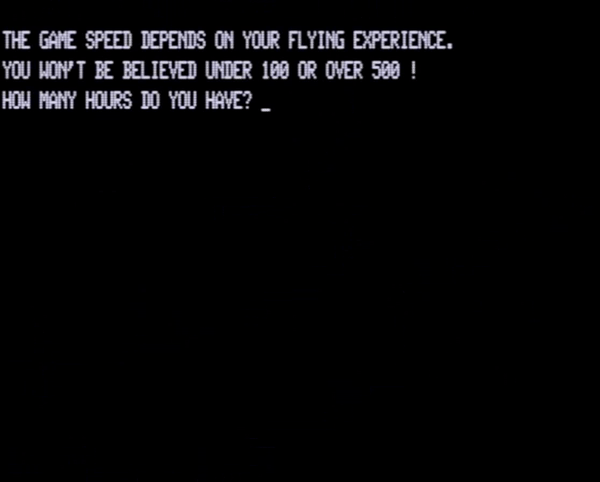
It is the 15th of August 1940 – Eagle Day was two days ago, and the Germans will be back. It is 7:20. I must specify which of my 13 British airbases I want to put on high alert.
As there is no such thing as overreaction when your towns are being bombed, my answer is : All of them !
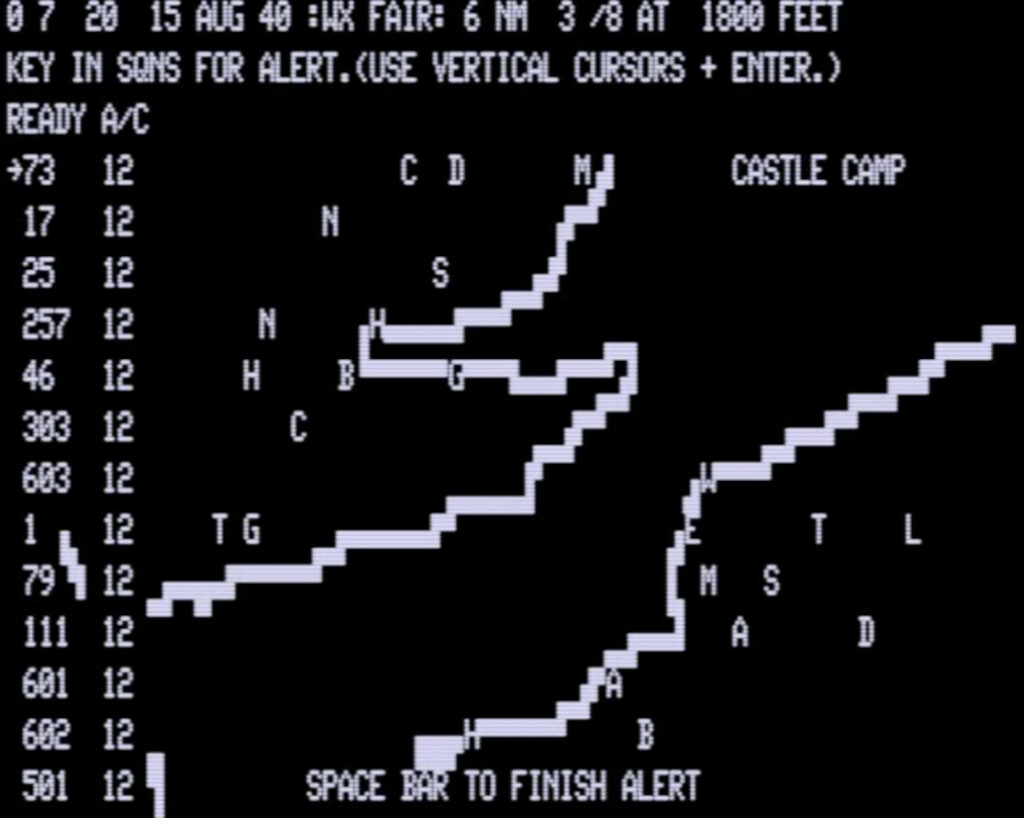
At 7:51 exactly, enemy raiders are detected by radar ! No less than 168 planes, bearing 125°. Clear sky, fair wind. I can scramble as many as 7 squadrons, each of them including 12 planes. Given the size of the German raider force, I scramble as many squadrons as I can, picking, well, the squadrons at the top of the list !
At 8:10 AM, my 84 fighters meet the 168 enemy planes :
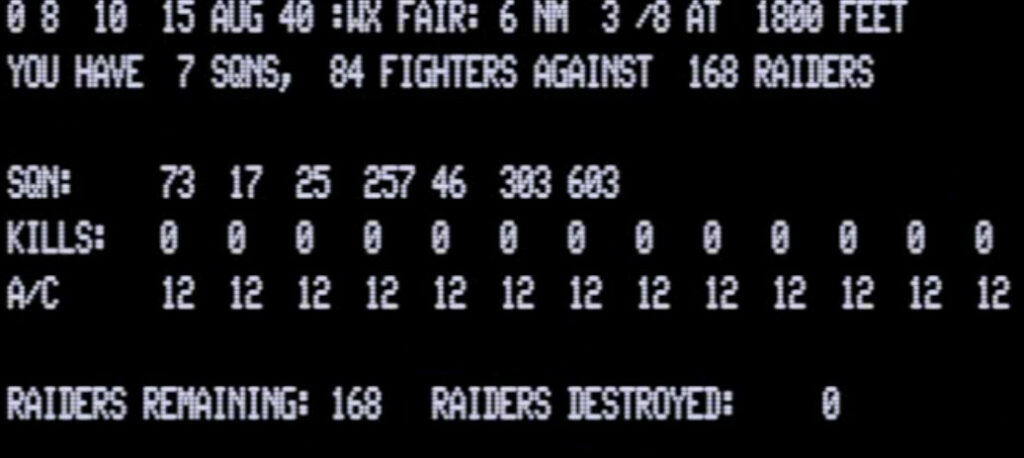
My planes immediately engage, and I have to deploy all my tactical acumen to keep the enemy in front of my visor :
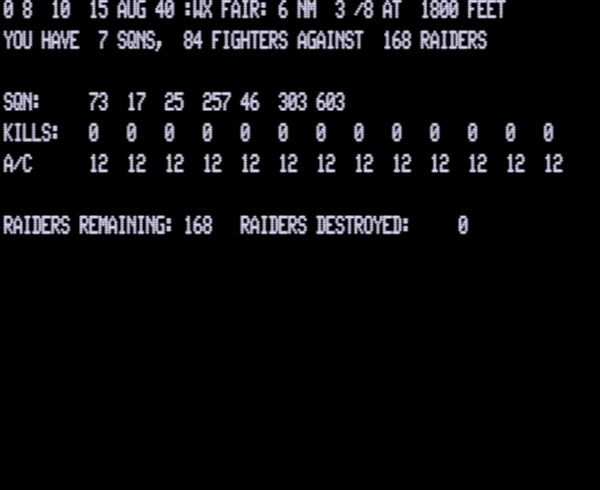
What do you mean you expected more from the combat phase ?
Well, that’s all there is to show for the combat phase. I must put the pixel triangle representing the enemy in front of my screen and shoot, and every time I do that I eliminate 7 enemy planes. Why 7 ? Because I intercepted the enemy bombers with 7 squadrons, silly !
Some messages randomly appear at the bottom of the screen, sometimes it even says I got shot down and I lose one of my planes, which does not seem to have any further effect.
After some time, I exhaust all my ammos, and the battle ends :

Below 70 raiders, enemy attacks are cancelled. Unfortunately, the Germans have exactly 70 planes left, so they start bombing a good chunk of Kent and just to be sure the Channel as well :
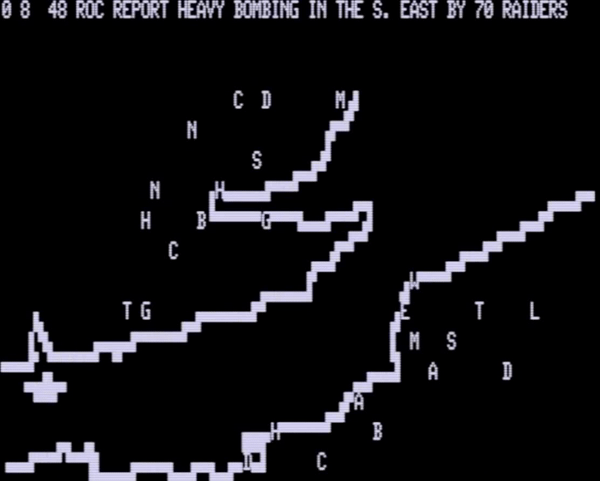
I lost two airfields, but some of the squadrons which intercepted the enemy managed to return and refuel before the next alert at 10:45. I send 7 squadrons again.
The Germans do better in the second dogfight, only losing 84 planes, and destroying no fewer than 6 of mine !
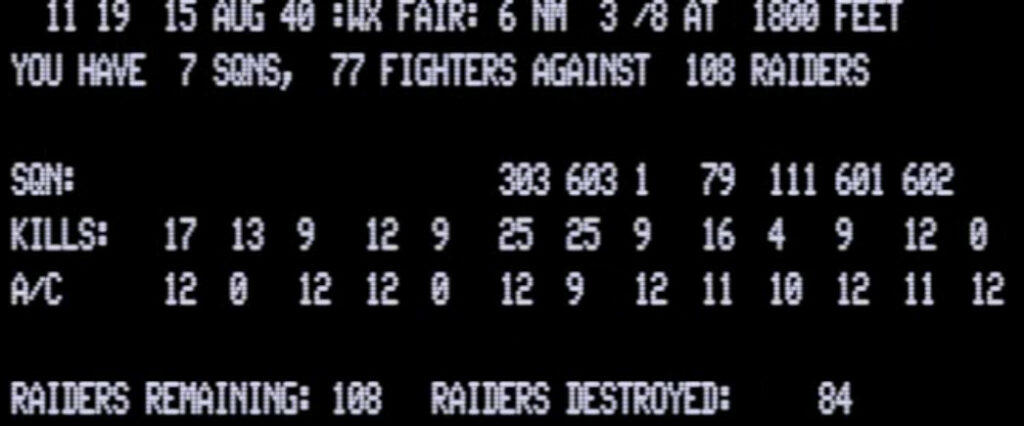
They are less lucky with their bombardment, and they cause no damage to my airbases. Cities don’t count.
For the third alert at 14:12, I have only 3 squadrons available, and shoot down only 21 enemy planes, losing 1 of mine. More inefficient bombing ensues.
That’s the last German attack for the day – presumably, the German pilots left their office early for the Thursday evening party.

And surprise, that’s also the end of the game – though with that kind of losses I understand the Germans are not willing to try again.

I was not sure I would cover this game, but I got delayed on my next games (Emperor and Close Assault), and it is a good opportunity to thank commenter Porkbelly who fixed the game so I could test it. The version available on Ira Goldklang’s reference site was broken (the game crashed in the action phase) and Porkbelly checked the code and fixed the issues. The game is also amusing in that it feels like the designer wanted to have a realistic strategic management game of some sort, but halfway through ran out of time, idea, energy or memory and just went for the least satisfying action phase I can think of.
Battle of Britain was published by Molimerx and its author is unknown (there are no credits in the game, and the catalogue only credits “a serving air force officer“) ; I am not even sure of the date of release. The first ad mentioning a Battle of Britain game for Video Genie (a TRS-80 clone) can be found in the October 1981 issue of Personal Computer World, but even assuming it is the correct Battle of Britain the game may have been released much earlier.
And for one last read about this game, I cannot resist showing the description of the game from the 1982 Molymerx catalogue, Molymerx being Molimerx’s sister company in New Zealand and Australia :
